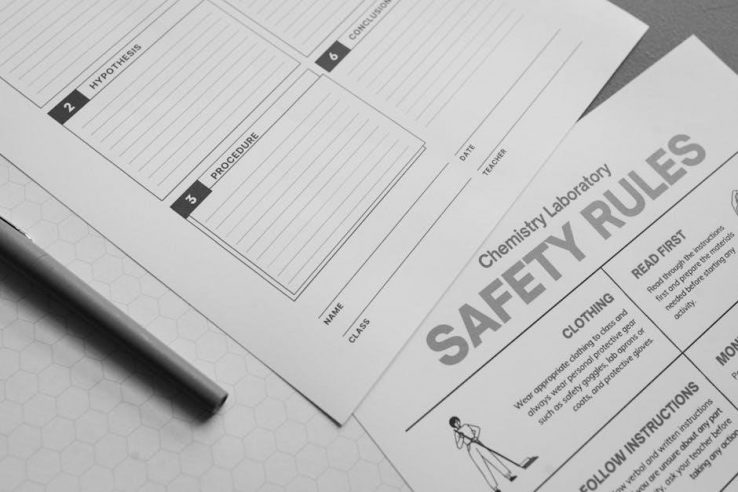Codependency is a pattern of unhealthy reliance on others, often rooted in trauma. Worksheets offer structured tools for self-reflection, boundary setting, and self-worth improvement in recovery.
What is Codependency?
Codependency is a pattern of unhealthy reliance on others, often rooted in trauma, neglect, or substance abuse. It can lead to low self-worth, stress, and identity loss. Worksheets provide structured tools to help individuals identify codependent behaviors, set boundaries, and improve self-worth, guiding them toward recovery and healthier relationships.
These tools are designed for self-reflection and personal growth, offering exercises to enhance self-esteem and build self-awareness. By addressing the root causes of codependency, worksheets empower individuals to break harmful patterns and develop healthier relationship dynamics, fostering emotional resilience and independence.
Common Symptoms of Codependency
Common symptoms of codependency include difficulty expressing feelings, prioritizing others’ needs over one’s own, and struggling to maintain healthy boundaries. Individuals may experience identity loss, low self-worth, and stress due to unhealthy relationship dynamics. They often enable harmful behaviors in others while neglecting their own well-being. Codependency can also manifest as people-pleasing, fear of abandonment, and an inability to communicate needs effectively. Worksheets designed for codependency help identify these patterns, offering exercises to enhance self-awareness and improve communication styles. By addressing these symptoms, individuals can begin to break free from codependent cycles and develop healthier, more balanced relationships.
The Role of Trauma and Neglect in Codependency
Trauma and neglect often serve as the foundation for codependent behaviors. Experiences of emotional or physical abuse, as well as neglect, can lead to deep-seated insecurities and a distorted sense of self-worth. Individuals may develop codependency as a coping mechanism to navigate unsafe or unpredictable environments. This pattern often manifests in adulthood, where they seek validation through relationships, sacrificing their own needs to maintain harmony. Worksheets designed for codependency recovery help individuals identify these root causes, offering exercises to process trauma and rebuild self-awareness. By addressing these underlying issues, individuals can begin to break free from cycles of codependency and develop healthier ways of relating to others.

Codependency Worksheets: A Comprehensive Guide
Codependency worksheets are tools for self-reflection and recovery, helping individuals identify patterns and set boundaries. They guide users through exercises to improve self-worth and promote healthy relationships.
What Are Codependency Worksheets?
Codependency worksheets are structured tools designed to help individuals identify and address codependent behaviors. They provide exercises for self-reflection, boundary setting, and self-worth improvement. These worksheets guide users through practical steps to recognize patterns, assess relationships, and develop healthier communication styles. Often available as downloadable PDFs, they are widely used in therapy and personal recovery journeys. Many worksheets focus on trauma, neglect, and substance abuse as root causes of codependency. They offer a comprehensive approach to understanding and overcoming codependent tendencies, helping users build self-awareness and foster healthier relationships. Worksheets are accessible online, with popular options available on platforms like Etsy or Therapist Aid, making them a convenient resource for healing and growth.
Why Use Codependency Worksheets?
Codependency worksheets are effective tools for self-reflection and growth. They provide structured exercises to identify and address unhealthy patterns, helping individuals set boundaries and improve self-worth. By guiding users through practical steps, these worksheets promote healthier relationships and personal healing. They are particularly useful for those struggling with trauma, neglect, or low self-esteem. Worksheets offer a clear framework to assess communication styles and develop emotional awareness. Available as downloadable PDFs, they are accessible and convenient for therapy or personal use. Many worksheets are designed to complement professional guidance, making them a valuable resource for anyone seeking to overcome codependency. Regular use can lead to lasting changes, fostering independence and emotional well-being in individuals and their relationships.
How to Choose the Right Codependency Worksheets

Selecting the right codependency worksheets involves assessing your specific needs and goals. Consider whether you need help with boundary setting, self-worth improvement, or communication skills. Look for worksheets created by professionals, such as therapists, to ensure credibility and effectiveness. Check reviews and recommendations to find trusted sources. Evaluate the format—guided exercises or journaling prompts—and choose what suits you best. Ensure the worksheets are easily downloadable and printable as PDFs. Determine if they are part of a larger program or if standalone sheets suffice. Consider your budget, as some may require payment for in-depth content. Think about whether you prefer to use them independently or with a therapist. Assess the time commitment required and seek evidence of effectiveness. Opt for culturally sensitive content that resonates with your background. Ensure they cover a wide range of topics or focus specifically on your issues. Look for features that allow progress tracking and adaptability for revisiting exercises. Finally, choose worksheets that match your current level of understanding and comfort to stay motivated and productive.

Identifying Codependent Behaviors
Codependent behaviors often involve prioritizing others’ needs over your own, difficulty expressing feelings, and fear of abandonment, which can hinder personal growth and healthy relationships.

Recognizing Patterns in Relationships
Recognizing patterns in relationships is crucial for addressing codependency. Codependent individuals often prioritize others’ needs over their own, leading to people-pleasing and fear of abandonment. These behaviors can stem from deep-seated emotional triggers, such as a need for validation or fear of rejection. Worksheets designed for codependency help identify these patterns by prompting self-reflection on relationship dynamics; For example, they may ask questions about enabling behaviors, emotional dependency, or difficulty in setting boundaries. By examining these interactions, individuals can gain clarity on how their actions perpetuate unhealthy cycles. This awareness is the first step toward breaking free from codependent patterns and fostering healthier connections. Worksheets also encourage users to assess how these behaviors impact their self-worth and overall well-being, providing a roadmap for positive change.
Assessing Self-Worth and Identity
Assessing self-worth and identity is a critical step in understanding codependency. Many individuals struggle with low self-esteem, often tied to their role in relationships. Worksheets designed for codependency help users explore how their self-worth is shaped by external validation rather than internal acceptance. Exercises may include reflecting on past experiences, identifying negative self-talk, and challenging beliefs that equate self-value with others’ approval. By examining these patterns, individuals can begin to rebuild their sense of identity and develop healthier self-perceptions. These tools also guide users in recognizing how codependency can lead to identity loss, helping them reconnect with personal goals, values, and desires. This self-assessment process is foundational for breaking free from codependent cycles and fostering emotional independence.
Evaluating Communication Styles
Evaluating communication styles is essential in addressing codependency. Many individuals struggle with expressing their needs and emotions effectively, often prioritizing others’ feelings over their own. Codependency worksheets guide users in identifying patterns of people-pleasing, passivity, or aggression in their interactions. These tools help assess whether communication is healthy or detrimental to personal well-being. Exercises may include reflecting on past conversations, identifying triggers, and practicing assertive responses. By evaluating these styles, individuals can learn to express themselves more authentically and set boundaries without guilt. Improving communication is a key step in breaking codependent cycles and fostering mutual respect in relationships. Worksheets provide practical strategies to enhance clarity, reduce conflict, and promote emotional honesty, leading to healthier interactions overall.

Setting Boundaries in Codependent Relationships
Setting boundaries is crucial in breaking codependent patterns. Worksheets provide exercises to identify and practice healthy limits, fostering mutual respect and emotional well-being in relationships.
Understanding the Importance of Boundaries
Boundaries are essential for maintaining healthy relationships and personal well-being. They help define individual limits, preventing emotional overload and enabling mutual respect. In codependent relationships, boundaries often blur, leading to enmeshment and loss of identity. Worksheets designed for codependency recovery emphasize the significance of setting and communicating boundaries effectively. These tools guide individuals in identifying their limits, expressing needs clearly, and maintaining them without guilt. By establishing boundaries, individuals can break free from codependent patterns, foster healthier interactions, and rebuild their sense of self-worth. This process is vital for achieving emotional balance and sustainable recovery from codependency.
Practical Steps to Set Healthy Boundaries
Setting healthy boundaries involves clear communication and consistent enforcement. Worksheets often guide individuals through identifying their limits and practicing assertiveness. Start by listing personal values and needs to understand what boundaries are necessary. Practice using “I” statements to express feelings without blame, such as “I feel overwhelmed when…” rather than “You always…”. Setting consequences for when boundaries are crossed ensures they are respected. Regularly reviewing and adjusting boundaries is also crucial as relationships evolve. Worksheets may include exercises like role-playing conversations or writing scripts to build confidence. Over time, these steps help establish mutual respect and reduce codependent tendencies, fostering healthier dynamics in relationships.
Consequences of Not Setting Boundaries
Failing to set healthy boundaries can lead to resentment, emotional burnout, and feelings of being overwhelmed. Without clear limits, individuals may overextend themselves to meet others’ needs, compromising their own well-being. This can result in emotional exhaustion and stress, as they sacrifice personal desires and priorities. Over time, codependent patterns may intensify, making it harder to maintain healthy relationships. Additionally, lack of boundaries can enable harmful behaviors in others, perpetuating cycles of dependency. Worksheets often highlight these risks, emphasizing the importance of boundary-setting to preserve self-worth and foster mutual respect. Ignoring boundaries can ultimately lead to feelings of powerlessness and identity loss, underscoring the necessity of establishing and maintaining them for emotional and relational health.

Improving Self-Worth Through Worksheets
Codependency worksheets help individuals identify self-worth patterns, challenge negative beliefs, and build confidence through guided exercises, fostering self-awareness and emotional growth.
The Connection Between Self-Worth and Codependency
Codependency often stems from low self-worth, where individuals seek validation through others. This can lead to identity loss and stress, as self-value becomes externally dependent rather than intrinsic. Worksheets help identify these patterns, encouraging self-reflection and growth. They guide users to recognize how codependent behaviors reinforce low self-esteem and hinder personal goals. By addressing these connections, worksheets empower individuals to rebuild self-worth, fostering healthier relationships. This process is crucial for breaking the cycle of codependency and achieving emotional independence. Worksheets provide structured exercises to enhance self-awareness, a key step in recovery and personal development.
Exercises to Enhance Self-Esteem
Codependency worksheets include exercises to boost self-esteem, such as identifying personal strengths and positive affirmations. These activities help individuals recognize their intrinsic value and develop a healthier self-image. By focusing on self-reflection, users can challenge negative beliefs and cultivate confidence. Worksheets often guide users to set personal goals, fostering a sense of achievement and empowerment. Additionally, exercises that promote gratitude and self-care encourage individuals to prioritize their own needs, reducing reliance on others for validation. Regular practice of these exercises can lead to lasting improvements in self-esteem, which is essential for overcoming codependency and building fulfilling relationships. These tools provide a structured path toward emotional healing and growth.
Building Self-Awareness
Building self-awareness is a critical step in addressing codependency. Worksheets designed for this purpose often include exercises like journaling, self-reflection prompts, and identifying emotional triggers. These tools help individuals recognize patterns in their thoughts, feelings, and behaviors, fostering a deeper understanding of their role in relationships. By exploring personal values and beliefs, users can uncover how these may contribute to codependent tendencies. Worksheets also encourage users to assess their emotional responses and communication styles, providing insight into how these may perpetuate unhealthy dynamics. Regular self-reflection can lead to greater accountability and personal growth. Over time, this heightened awareness enables individuals to break free from harmful patterns and develop healthier ways of interacting with others, ultimately improving their emotional well-being and relationship quality.

Overcoming Codependency: A Step-by-Step Approach
Overcoming codependency involves a structured process using worksheets for self-reflection and boundary setting. These tools help identify patterns, break harmful cycles, and foster healthier relationships.
The Role of Self-Reflection in Recovery
Self-reflection is crucial in codependency recovery, enabling individuals to identify patterns and gain insight into their behaviors. Worksheets designed for self-reflection guide users through exercises that help them explore their emotions, beliefs, and relationship dynamics. By examining personal experiences and thought processes, individuals can uncover the root causes of codependent tendencies. These tools promote accountability and self-awareness, essential for breaking harmful cycles. Regular self-reflection fosters personal growth and empowers individuals to develop healthier ways of interacting with others. Through consistent practice, self-reflection becomes a cornerstone of lasting recovery, allowing individuals to build stronger, more balanced relationships and improve their overall well-being.
Breaking Codependent Patterns
Breaking codependent patterns requires intentional effort and self-awareness. Worksheets designed for codependency recovery provide structured exercises to help individuals identify and challenge unhealthy behaviors. By examining triggers and underlying beliefs, users can disrupt cycles of dependency. These tools often include prompts to explore past experiences and redefine personal boundaries. Practicing assertiveness and learning to prioritize one’s own needs are key steps in breaking free from codependency. Worksheets also encourage users to develop healthier communication habits and build self-esteem. Over time, consistent use of these resources fosters lasting change, enabling individuals to form more balanced and fulfilling relationships. The process is gradual but transformative, leading to greater emotional freedom and personal growth.
Building Healthy Relationships
Building healthy relationships is a cornerstone of codependency recovery. Worksheets designed for this purpose guide individuals in identifying red flags and fostering mutual respect. They encourage setting clear boundaries, improving communication, and prioritizing personal needs. By practicing emotional honesty and active listening, users can develop deeper connections. These tools also help in recognizing signs of manipulation or control, empowering individuals to maintain their autonomy. Healthy relationships are built on trust, understanding, and balance, which worksheets help cultivate through reflective exercises. Over time, these practices lead to stronger, more fulfilling partnerships, free from the cycles of dependency and enabling behaviors. This transformative process supports long-term emotional well-being and meaningful connections.

Additional Resources for Recovery
Explore recommended workbooks, online guides, and therapy tools. Etsy shops offer unique worksheets, while platforms like Therapy Aid provide additional resources for structured recovery support.
Recommended Codependency Workbooks
Several workbooks are highly recommended for addressing codependency, offering structured exercises and insights. “The Codependency Workbook” provides practical tools for identifying patterns and setting boundaries. “Codependent No More” by Melody Beattie is a classic, focusing on breaking free from unhealthy dynamics. “Healing Codependency” offers a holistic approach, combining therapy techniques with self-reflection. Additionally, “Beyond Codependency” explores rebuilding self-esteem and fostering healthy relationships. These resources are available in PDF formats, making them accessible for self-paced recovery. Many are available on platforms like Etsy or through specialized therapy shops, ensuring a wide range of options for individual needs. These workbooks are invaluable for those seeking guided support in overcoming codependency.
Online Tools and Guides
Online tools and guides provide accessible resources for understanding and overcoming codependency. Websites like Etsy offer downloadable codependency worksheets in PDF format, designed for self-reflection and structured exercises. These tools often include prompts for identifying patterns, setting boundaries, and improving self-worth. Additionally, platforms such as Therapist Aid offer free and premium resources, including guides and videos, to support personal growth. Many online tools are tailored for both individuals and professionals, making them versatile for various recovery journeys. These resources emphasize practical steps for breaking codependent cycles and fostering healthier relationships. By leveraging online tools, individuals can access support anytime, anywhere, making recovery more manageable and sustainable. These guides are particularly helpful for those seeking structured yet flexible approaches to healing.
Therapy and Support Groups
Therapy and support groups are essential components of codependency recovery. Professional therapists provide guidance tailored to individual needs, helping participants identify patterns and develop healthier behaviors. Support groups, such as Codependents Anonymous (CoDA), offer a safe space for sharing experiences and connecting with others facing similar challenges. These groups foster empathy, understanding, and accountability, which are crucial for breaking codependent cycles. Many therapists incorporate codependency worksheets into their sessions, using them as tools for self-reflection and growth. Support groups also encourage members to use these worksheets as part of their personal recovery journey. Combining therapy with group support creates a comprehensive approach to healing, ensuring sustained progress and emotional well-being. These resources are vital for those seeking to overcome codependency and build healthier relationships. They provide both structure and community, key elements in the recovery process.
Embrace recovery tools, continue self-reflection, and seek support to build healthier relationships and achieve emotional well-being. Your journey to growth and freedom has just begun.

Summarizing the Journey to Recovery
Your journey through codependency recovery has been a comprehensive exploration of self-discovery and healing. By addressing root causes like trauma and neglect, you’ve taken significant steps toward breaking free from unhealthy patterns. Codependency worksheets have served as powerful tools, guiding you through identifying behaviors, setting boundaries, and rebuilding self-worth. These exercises have empowered you to recognize your value and develop healthier communication styles. The process has not been easy, but each step reflects your commitment to growth. Remember, recovery is a lifelong journey, and every effort to improve relationships and self-awareness brings you closer to emotional freedom. Celebrate your progress and stay dedicated to nurturing a stronger, healthier you.
Encouragement for Continued Growth
As you continue on your path to overcoming codependency, remember that growth is a journey, not a destination. Celebrate every small victory and acknowledge the courage it takes to confront deep-seated patterns; Codependency worksheets have been invaluable in helping you identify areas for improvement and develop healthier habits. Keep using these tools to reinforce positive changes and maintain accountability. Surround yourself with supportive people who encourage your independence and self-worth. Healing takes time, but with persistence and self-compassion, you can build fulfilling relationships and a stronger sense of self. Stay committed to your progress and embrace the freedom that comes with healthy boundaries and emotional resilience.
